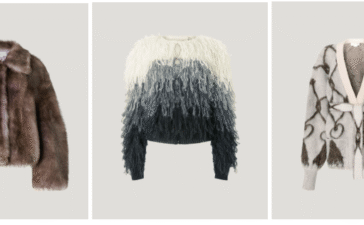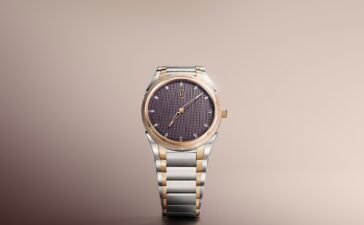Boucheron introduces its new capsule collection, born of the Maison’s perpetual pursuit of innovation. This line offers a reinterpretation of the iconic Quatre, crafted with the cutting-edge technique of 3D-printing sand. Claire Choisne has juxtaposed black sand with yellow gold in a striking set of cuff bracelets and bangles. With their graphic lines and maximalist esthetic, these creations are a perfect fusion of style and innovation.



Innovation in Jewelry
Boucheron has stood out for its trailblazing spirit ever since the day it was founded in 1858. Creative Director Claire Choisne is following in Frédéric Boucheron’s footsteps when she introduces unusual materials for High Jewelry through her Carte Blanche collections – materials that question the notion of what’s precious. Always pushing boundaries, the Maison has launched capsule collections every year since September 2020, applying the innovative thinking of its High Jewelry collections to its iconic jewelry lines. Boucheron broke new ground by combining denim with diamonds in 2020, introducing a holographic coating in 2021, employing Cofalit®[1] in 2022 and aluminum in 2023, and incorporating glass and the 5D memory technique[2] in 2024.
Sand, a material elevated by boucheron
This isn’t the first time Boucheron has employed sand in its creations. In the 2015 “Bleu de Jodhpur” High Jewelry collection, sand from the Thar desert was embedded into a necklace made of rock crystal. The concept was taken a step further in the 2024 Carte Blanche collection, “Or Bleu”, inspired by the rushing waters and black sandy shores of Iceland. A state-of-the-art technique enabled three original pieces – a necklace, a cuff bracelet and a pair of earrings – to be sculpted out of black sand, without the need for any metal edges or encapsulation. Creative Director Claire Choisne’s fascination with this technology led her to continue exploring it this year by applying it to the Quatre icon. This posed a new challenge: how to distill this material not into rounded contours, but into the clean, graphic lines of Quatre.
Next-generation technology driving forward design
To fashion these new pieces, Boucheron turned to a 3D sand-printing technique borrowed from the automotive and aeronautics industries. Polymer binder was precision-sprayed onto the sand in successive layers barely a millimeter thick, like a millefeuille puff pastry, making the grains adhere to one another as if glued. This innovative process in jewelry yields a remarkably hardwearing material that retains the texture of the sand – a novel esthetic that chimes with the Maison’s experimental spirit.
The “quatre sand cuff” pieces
In this new capsule collection, Claire Choisne sought to move beyond technical feat by revisiting the esthetic of the Quatre icon. She designed this seven-piece set to be worn stacked, together or separately: one black sand and yellow gold bracelet featuring an XXL version of the Clou de Paris pattern; two other bracelets with the same materials and pattern, but in a smaller format; and lastly, four brushed gold bangles to complete the set. Black sand was deliberately chosen for the radical contrast it creates against the warmth of yellow gold. This bold, resolutely contemporary esthetic is very much at home in the Quatre collection.
These pieces were extremely challenging to craft, from a technical perspective. First, the Creative Studio used 3D modeling to achieve the oversized dimensions they desired, while still reproducing the precision edges that characterize the signature Quatre pattern, Clou de Paris. Each black sand component was then shaped using 3D printing, before being mounted onto the gold structural bangle. Its polished inner surface and brushed edge maximize the interplay of textures and light, while a special coating seals in the color of the sand. In a mark of the Maison’s technical artistry, the clasp on each bangle is inconspicuous enough not to detract from the purity and power of the design.
[1] Cofalit® is a brand of the Europlasma Group
[2] Ultrafast nanostructuring technique invented by Peter Kazansky, Professor at the University of Southampton and the Chief Science Officer of SPhotonix








